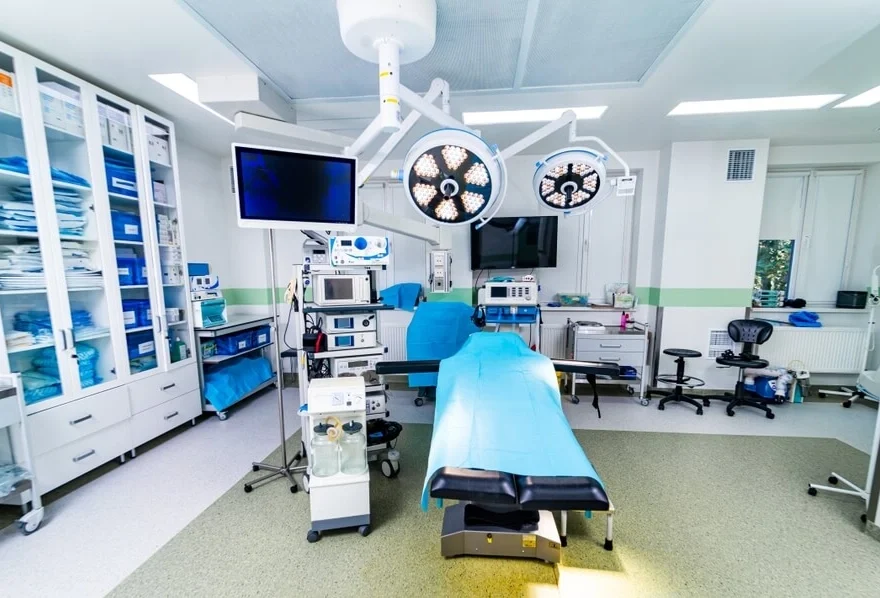Biomedical equipment technology plays a pivotal role in the evolution of modern healthcare, driving improvements in diagnosis, treatment, and patient monitoring. This field encompasses a broad spectrum of devices—from diagnostic equipment and surgical instruments to wearable medical devices and telemedicine tools—that collectively enhance the quality and accessibility of healthcare services worldwide.

Content
Understanding Biomedical Equipment Technology and Its Impact
Biomedical equipment technology refers to the design, development, and application of medical devices that support clinical operations and patient care. These devices include patient monitoring systems, medical imaging equipment, diagnostic tools, and portable medical devices that empower healthcare professionals to deliver precise and timely interventions.
With increasing demand for healthcare innovation, biomedical technology continues to evolve rapidly. Wearable medical devices, such as fitness trackers and remote monitoring tools, have transformed patient engagement, while telemedicine equipment enables healthcare delivery beyond traditional clinical environments. This convergence of technology and medicine opens new frontiers for personalized and preventive care.
Key Categories of Biomedical Equipment Technology
The scope of biomedical equipment technology spans several crucial categories, each serving distinct purposes in healthcare settings:
- Diagnostic Equipment: Tools like ultrasound machines and medical imaging equipment facilitate early and accurate disease detection. Advanced diagnostic medical sonography enables detailed internal visualization, improving treatment outcomes.
- Surgical Instruments and Hospital Equipment: Precision surgical instruments and hospital equipment suppliers ensure that medical teams have the necessary tools for complex procedures. These devices contribute to safer surgeries and enhanced patient recovery.
- Patient Monitoring Devices: Continuous monitoring devices, including wearable technology, provide real-time health data, essential for managing chronic conditions and critical care scenarios.
- Portable and Home Healthcare Equipment: Devices designed for use outside hospitals, including durable medical equipment and home healthcare supplies, extend care accessibility and support independent living.
Innovations Driving Biomedical Equipment Technology Forward
Biomedical device development is increasingly centered on integrating cutting-edge technologies such as bioelectronics and bioinstrumentation. These advancements enhance device sensitivity and functionality, offering unprecedented precision in diagnostics and therapy.
The rise of wearable technology has introduced new opportunities for health monitoring, enabling continuous tracking of vital signs through compact, user-friendly devices. Meanwhile, laboratory automation accelerates diagnostic workflows, reducing turnaround times and minimizing errors.
Integration with advanced medical software further augments the capabilities of biomedical devices, allowing seamless data analysis and remote patient management. Telemedicine equipment, now integral to healthcare, leverages these innovations to connect patients and providers regardless of location.
Manufacturing, Distribution, and Maintenance in Biomedical Equipment Technology
The biomedical equipment industry relies on a complex network of medical device manufacturers, distributors, and suppliers to meet diverse healthcare demands. Medical equipment sales and rentals offer flexible acquisition options, while regular maintenance and repair ensure equipment longevity and safety.
Engaging with reputable medical device manufacturers and suppliers guarantees compliance with regulatory standards and access to high-quality products. Skilled medical equipment technicians play a vital role in maintaining operational readiness, particularly for critical devices used in hospitals and clinics.
Ensuring Quality and Compliance in Medical Devices
Regulatory oversight, such as FDA approval, is essential to ensure that biomedical equipment meets stringent safety and efficacy standards. Products like FDA-approved blood pressure monitors undergo rigorous medical device testing and quality assurance to protect patient health.
Medical sterilization equipment supports infection control protocols, further safeguarding clinical environments. These quality measures reinforce trust in biomedical devices and support their widespread adoption.
Specialized Biomedical Equipment Sectors
Biomedical technology extends into specialized fields including veterinary and dental equipment. Veterinary medical equipment addresses animal health needs with tailored solutions, while dental equipment suppliers provide advanced instruments for oral healthcare.
Surgical instruments and hospital equipment suppliers continuously innovate to enhance procedural precision and patient safety across medical disciplines.
Future Outlook and Market Trends in Biomedical Equipment Technology
The healthcare industry is witnessing a surge in demand for telemedicine and remote patient monitoring, driven by technological advances and patient-centric care models. Wearable medical devices designed specifically for elderly care support active, independent lifestyles while enabling early intervention.
Portable medical devices and home healthcare equipment are transforming how and where care is delivered, expanding access beyond hospital walls. Biomedical device engineering remains a dynamic field, with ongoing research and development promising further breakthroughs.
Practical Considerations for Biomedical Equipment Selection and Maintenance
Selecting appropriate biomedical equipment involves evaluating factors such as supplier reliability, device capabilities, and regulatory compliance. Understanding the roles of medical equipment technicians ensures that devices remain in optimal condition.
Healthcare providers must weigh the advantages of medical equipment rentals versus purchases to optimize costs while maintaining quality standards. Regular maintenance and timely repairs are essential to avoid equipment downtime and ensure uninterrupted patient care.
Conclusion
Biomedical equipment technology stands at the forefront of healthcare innovation, offering vital tools that enhance diagnosis, treatment, and patient monitoring. By embracing emerging technologies and partnering with trusted suppliers, healthcare professionals can deliver superior care and improve patient outcomes. Staying informed about advancements in biomedical equipment technology ensures readiness for a future where healthcare is more efficient, accessible, and personalized.
Frequently Asked Questions
What is biomedical equipment technology?
Biomedical equipment technology involves the development and use of medical devices that aid in diagnosis, treatment, and patient care.
What are common types of biomedical equipment?
Common types include diagnostic equipment, surgical instruments, patient monitoring devices, wearable medical devices, and portable healthcare tools.
How does wearable technology impact healthcare?
Wearable devices provide continuous health monitoring, enabling early detection of medical issues and improving chronic disease management.
Why is maintenance important for medical equipment?
Regular maintenance ensures device accuracy, reliability, and compliance with safety standards, minimizing downtime and risks to patients.

Jerald is a blogger with a passion for technology who has been writing about the latest in the world of gadgets and gizmos. They are an avid reader of Science-Fiction novels and love to spend time with their wife and kids.

